Original Authors: @YBBCapital Researcher @Ac_Core_
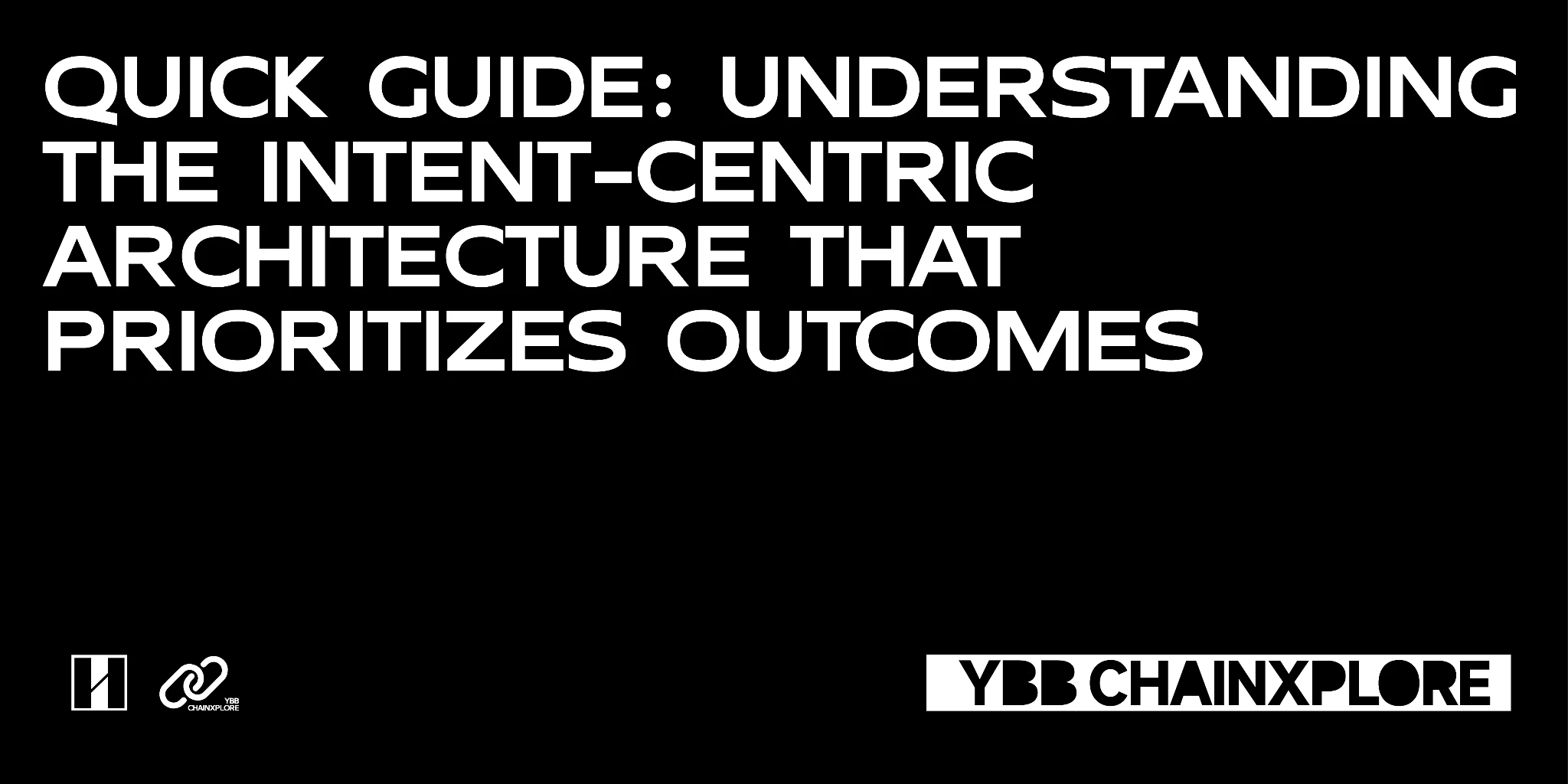
Preface
The cumbersome user experience of Web3 has become one of the reasons hindering the large-scale adoption of blockchain. With the recent introduction by the well-known Web3 venture capital firm Paradigm of the 10 potential trends the institution focuses on in the encryption field, "Intent-Centric protocols and infrastructure" ranked first, instantly attracting industry attention. This is a design concept that focuses on the user's needs and views intent as the core. For example, "I want to order a $30 hamburger for delivery" is an "intent." To fulfill this intent, the user needs to enter their name, phone number, and delivery address on the delivery platform, place the order, and make the payment. The process does not require the user to be concerned about the profit the business obtains from the $30 payment or the profit the platform allocates to the delivery person; the user only needs to wait at home for the hamburger to be delivered. This architectural form greatly simplifies the user's experience threshold, allowing each user to simply express their intent and hand over the intermediate process to various other protocols, waiting for the final result. Note: This article is not for project promotion, suitable for general readers to read, and the content is for analysis reference only.
Intent-Centric Design Principles
Background:
In the Web3 world, transactions are the most core function, and no matter whether it's DeFi, GameFi, NFT, or any other track, they all rely on basic transactions. However, the reality is that the decentralized nature of blockchain means that different chains are independent islands, and we need to find bridges to connect them in order to complete asset exchanges between different islands. Although centralized exchanges provide a convenient user asset trading experience, users still need to authorize wallets one by one to access numerous Dapp applications. In order to lower the experience threshold of decentralized applications, the concept of Intent-Centric was born after Paradigm introduced it as the top focus in the encryption field.
Although the prototype of "intent" did not emerge recently, the wave of this concept was sparked by Paradigm, so we will use their definition for reference: "Intent is a set of signed declarative constraints that allow users to create transactions for third-party outsourcing without relinquishing complete control over the transaction parties." In practice, the signing is driven by the user's spontaneous intent, but can transferring assets to third-party outsourcing to reduce the user's usage threshold be truly achieved? The following discussion will elaborate on what is required to achieve the vision of Intent-Centric.
What is Intent:
Intent-Centric can be understood as "centered on intent." In an article titled "Intent-Based Architectures and Their Risks" published by Paradigm on June 1, 23, the concept of intent was explained. In the regular transaction process for users, transaction signatures allow verifiers to verify and execute according to a specific calculation path, and the gas fee in the process is used to incentivize verifiers to complete the calculation. However, intent does not specifically refer to a particular calculation path; any path that achieves the final result under specific constraints is acceptable. In practice, by signing and sharing intent, users are actually allowing the recipient to choose the transaction execution path on their behalf (as shown in the figure below). In order to distinguish it from transactions, we define intent as an information signature that allows state transitions from a given initial state to retrieve multiple paths to achieve the final state result【1】.
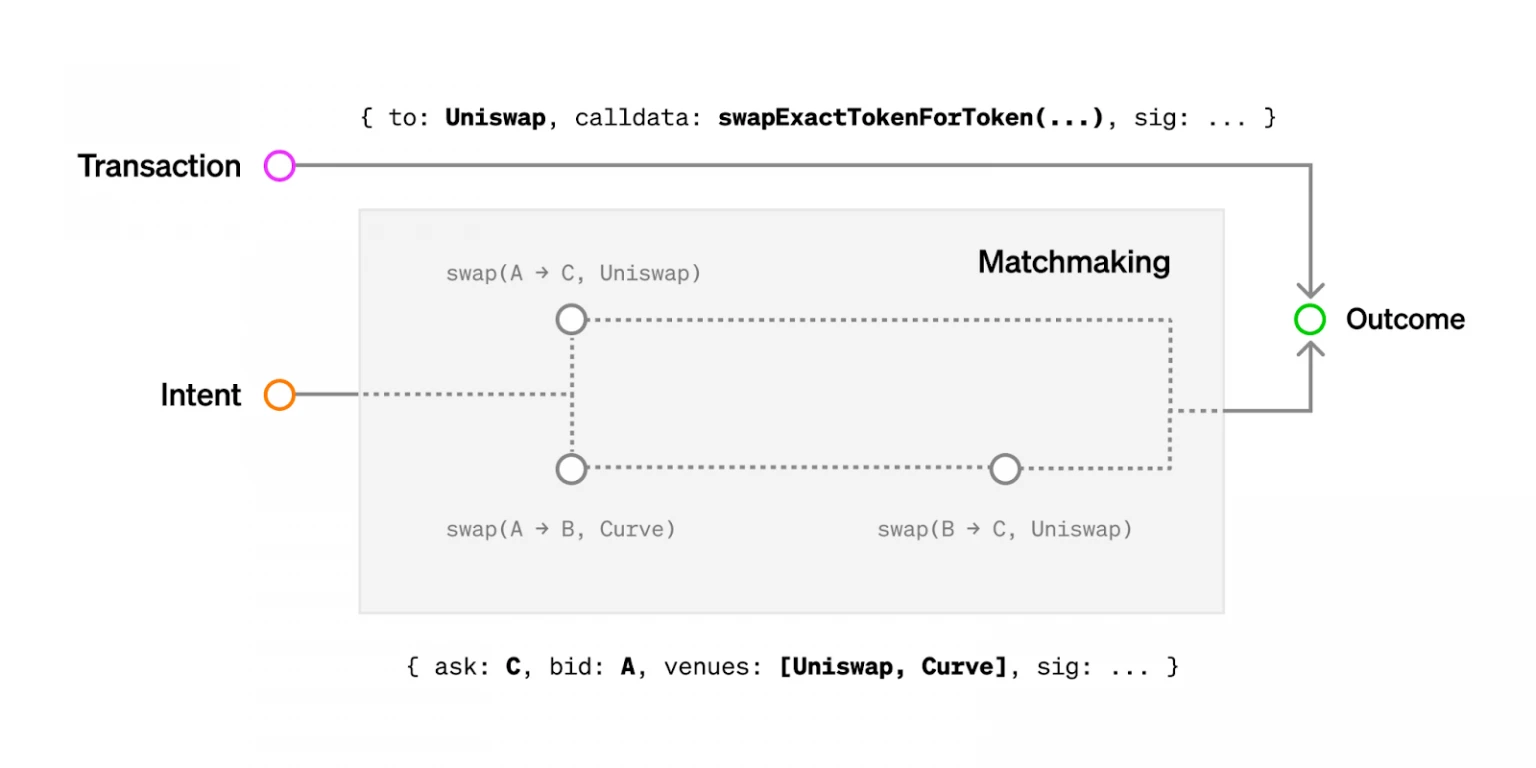
Image Source: Intent-Based Architectures and Their Risks – Paradgim
As shown in the above figure, when submitting a transaction, a specific execution path needs to be specified, such as exchanging tokens on Uniswap. However, when submitting intent, the execution path is determined by the matching result. For users, they only need to express their intent, and the related Intent-Centric protocols/applications will handle the rest, namely matching the execution path. In short, the Solver is responsible for matching the execution path that meets the intent, and the user only needs to wait for the final execution and obtain the result.
In summary: Transaction = I specify the way to do this; Intent = I only want this result and do not care about the process of implementation.
Different preferences of intent can be matched in complex ways, and achieving this process requires "discovering transaction counterparts" and "Solver's solving."
Bob, the Intent Solver
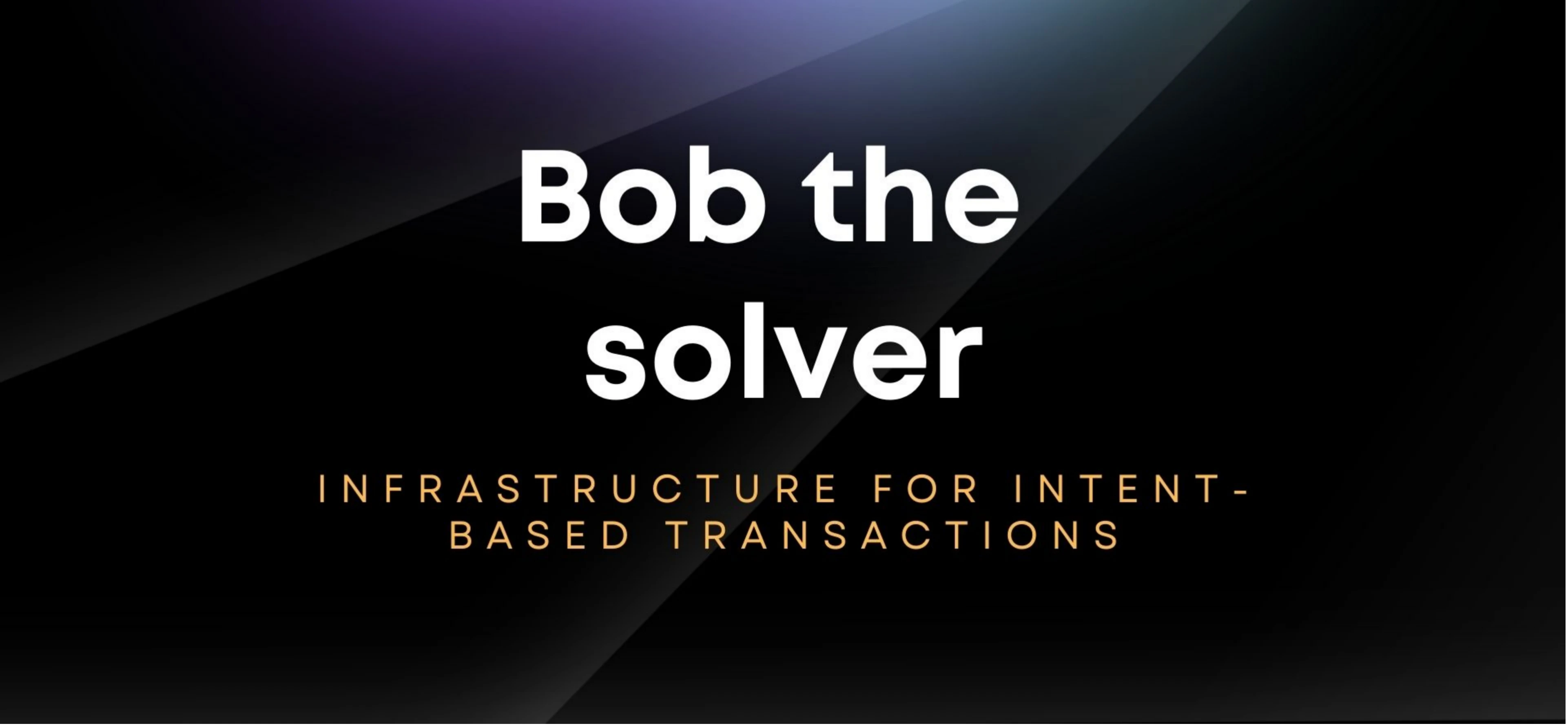
Image Source: ETH Global
Bob the Solver is an intent-based transaction infrastructure, the main purpose of which is to simplify the operation process, reduce the user's participation threshold, and integrate into wallets and decentralized applications in an integrated manner. Essentially, it creates and executes outsourced transactions for users. Its implementation mainly consists of two related parts:
Solver for creating transactions: It consists of an AI chatbot + intent classification + transaction optimization, responsible for implementing the optimal execution path for user intent and sending it to the AA wallet. The Solver is equipped with a machine learning (ML) model for classifying user intent.
"Abstract Account Wallet" for executing transactions: It uses the AA wallet system based on the EIP-4337 standard, consisting of a bundler and a paymaster contract, and is integrated with the Solver to simplify the transaction process.
Intent Layer and Solver
Is it possible to independently build an intent layer and let Solvers compete to solve it? Although it is theoretically achievable, the reality is that it is very difficult to implement. Here, it is important to mention Anoma and SUAVE (details are mentioned in the following content) to solve the most core MEV problem. In order to achieve the vision of Intent-Centric, what characteristics are needed to safely complete asset transfers by outsourcing transactions to third parties?
1. Trustworthy
In order to achieve the trustworthy and decentralized characteristics of blockchain, it may not be enough to only have a simple "intent network." This way, it cannot fulfill the guarantees of intent by users and Solvers, because after users express their intent, the Solver will calculate the specific fees required for each execution path, and the Solver will also be constrained by the adjustments set by the user. Users need to know that each execution path is trustworthy.
2. Privacy
The Solver provides users with the best execution path, and the inherent complexity is inevitably vulnerable to hacking, leading to asset theft or obtaining user information. At the same time, in most cases, users' on-chain activity information will be exposed to observers. In order to ensure the security of user information, at least some important information needs to be encrypted or hidden. However, achieving the privatization of computable information on the blockchain is very difficult.
3. Expression of Intent
Intent is an abstract concept, and the way users express intent on the blockchain seems to have similar issues to the way users ask questions to AI. How should I express it to make it understand what I want to convey? For some implicit and unclear intents, whether the Solver will incur more gas fees when choosing the execution path is the key to achieving intent.
4. Maintaining Consistency between Intent and MEV
Here, taking the independent blockchain that solves the practical problems of the EVM, SUAVE, as an example, when it processes Ethereum intent, it needs to conduct cross-chain settlements, similar to the huge success achieved by MEV decentralized solutions such as MEV-Geth and MEV-Boost, to meet the needs of cross-chain MEV with a more fair and transparent transaction processing mechanism.
5. Anti-censorship
According to Paradigm's explanation, we can easily see that there is a core issue: a Solver with AI capabilities should not exist in isolation. If a single Solver is attacked or disabled, it could lead to a catastrophic system crash. Additionally, there are concerns about the existence of Solver refusal to execute or execute errors, and these issues may be addressed by Anoma, as discussed in the following section.
6. Competitiveness of Solvers
Different users will have different intents, and the Solver will also include multiple transaction categories, such as exchange, cross-chain, and staking. There will be no competition between single Solvers, as they can only collect fees when settling on-chain. It may be possible to allow Solvers responsible for different transaction categories to be reasonably redistributed or optimize the Solver algorithm to maintain competitiveness between Solvers, allowing every valid address to qualify as a Solver to successfully participate in the Mempool, thereby improving the quality of transaction execution.
7. Intent Mempool
Paradigm has proposed three new Mempool solutions:
a. Permissionless Intentpools: Open design allowing anyone to submit intent to the Mempool and providing unrestricted access for executors.
b. Permissioned Intentpools: Submission and execution of user intent require permission, allowing users to pass intent to trusted third parties to execute on their behalf.
c. Hybrid Solutions: Combining the characteristics of the above two Mempools, aiming to strike a balance between openness and controllability.
Elements Required for Implementing Intent
Account Abstraction (AA)
In a simple review, Ethereum has two types of accounts: EOA (Externally Owned Account) and CA (Contract Account). The difference is that the former can initiate transactions, while the latter cannot initiate transactions but can host Solidity code. Most of the accounts currently in use are EOAs. In addition, there are multi-signature smart contract wallets such as Gnosis Safe (SCW), which cannot initiate transactions, so EOAs are needed to initiate SCW. This way, EOAs can be responsible for signing transactions, while smart contracts can execute any logic, creating numerous new application scenarios while enhancing asset security.
The implementation of the intent layer requires account abstraction (for reasons explained in the following SUAVE section). EIP-4337 consists of six parts: UserOperation, Bundler, EntryPoint, Wallet Factory, Paymaster, and Signature Aggregator. The simplified operation process is as follows:
Initiate user operation, i.e., execute transaction content;
Send the operation to the P2P "UserOperation Mempool," and the Bundler bundles the signature, gas fees, and other user operation transaction content for submission to the chain (this actually includes various situations, which will not be elaborated here);
The Bundler sends the bundled content to the EntryPoint for processing, and optionally uses the Signature Aggregator to check for legality;
The EntryPoint pre-sends the transaction to the wallet contract or paymaster contract;
The paymaster contract can unfold into various types based on the project's business logic, but this will not be elaborated here for simplicity【2】.
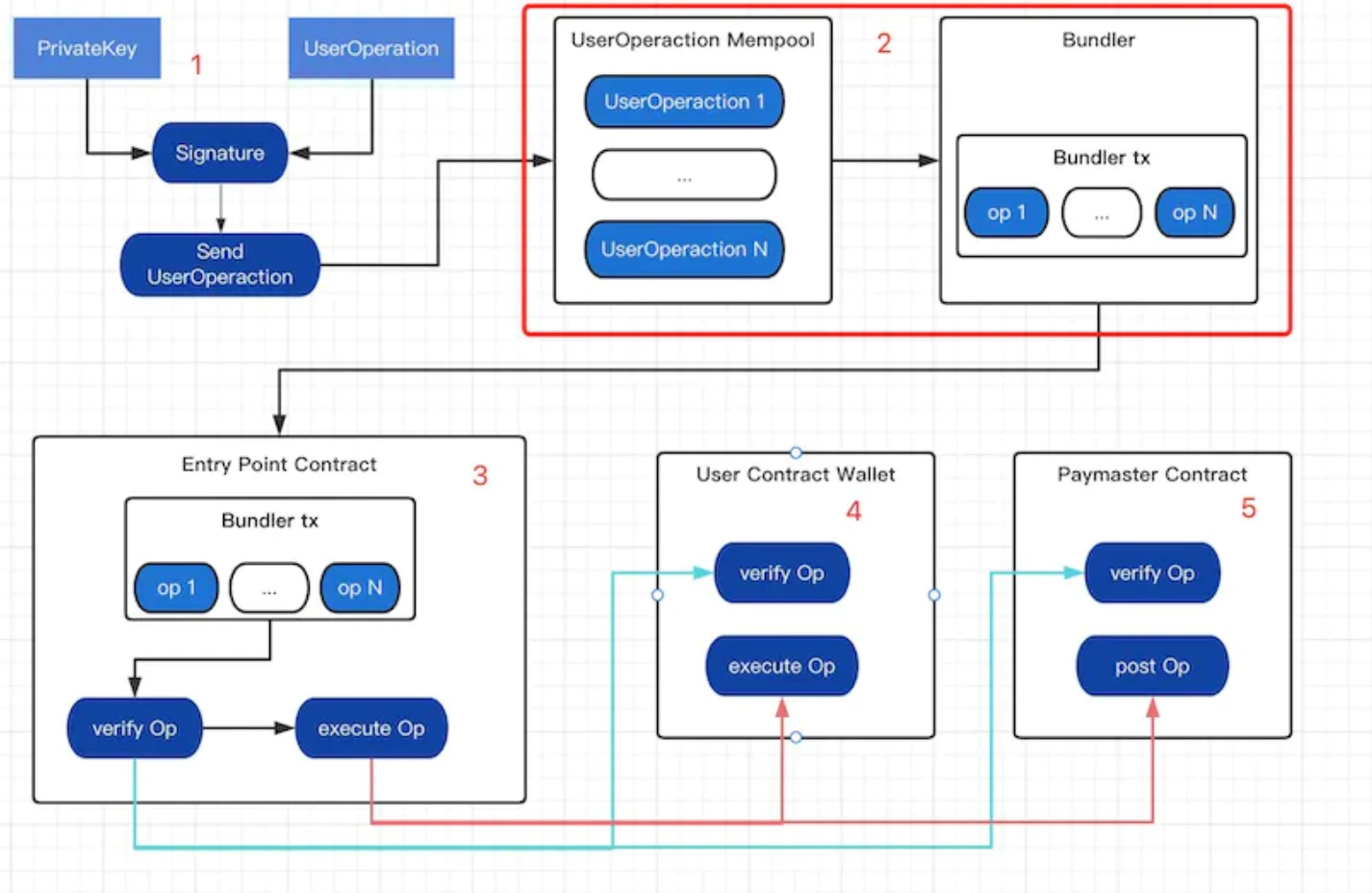
Image Source: ReadON Investment Research Group
Undoubtedly, the smart contract wallet is the largest participant in account abstraction. The main competing forces currently are the multi-signature wallet Gnosis Safe and the Candide smart contract wallet, which is focused on building full compatibility with EIP-4337. As analyzed in the above figure, account abstraction uses the bundler and paymaster to achieve the "narrow" intent suitable for developers, while Paradigm uses the Solver and AI to achieve the "broad" intent suitable for the general public. It is most appropriate to place the concepts of "abstraction" and "intent" within the same understanding framework, as they both have a kind of magical concept of disorder with a hint of order.
Programmability of Intent
According to Researcher@tmel0211's viewpoint, the programmability of intent can be summarized as follows: if intent is not programmable, the program cannot be executed, automation is not possible, and intelligence is not feasible. How to understand this? Intent is a human expression of thought that inherently contains emotional factors, while the recipient is a series of cold code and algorithms. For example, if my intent is to make money, how can the code and algorithms help me find the execution path for that intent? Intent-Centric is not a completely new concept, but is built on the current simplified intent design. Therefore, existing Intent-Centric projects and concepts have been organized.
Representative Projects:
UniswapX: Off-chain extension solution for intent
CowSwap: Off-chain extension solution for intent
1inch: Fusion order matching off-chain + multi-DEX aggregator
Solv Protocol: Implementation of complex financial intent using the new ERC3525 standard
Unibot: Centralized server backend with preset parameters, rules, and automation for intent
Opensea: Off-chain signature + on-chain contract combination
Representative Concepts:
ERC3525 Standard: Proposed by Solv Protocol, aiming to provide a semi-quantized asset standard that can more structurally describe digital assets to meet various application scenario requirements.
Abstract Account Account Abstraction: Provides a standardized set of account management interfaces for abstracting the underlying implementation complexity of different account types, including gas-free, social recovery, etc.
MPC Wallet: Uses private key sharding technology to split the private key into multiple parts, stored on independent nodes. When performing transactions and other operations, these nodes jointly calculate and generate signatures through secure multi-party computation protocols, without the need to reconstitute the complete private key.
In summary, whether it is a representative project or concept, they all use a series of more complex instructions to enable users to have a more simplified experience. If the above content is categorized, it can be divided into four categories:
Centralized intent:
Based on a centralized resource matching platform, such as Unibot and other robot trading CEX transactions, Friend.tech, etc.
Structured intent:
Based on a combination of smart contracts or proxy contracts, on-chain + off-chain pre-processing combinations, new ERC standards, etc., preset parameters adapted for EVM virtual machine execution.
Distributed intent:
Based on a new blockchain architecture with distributed Solvers + Executors, building a new market for executing complex user intents.
Intelligent intent:
Based on AIGC as input + outcome carriers, programming complex user intents and executing outputs through AI trained across the entire DeFi domain.
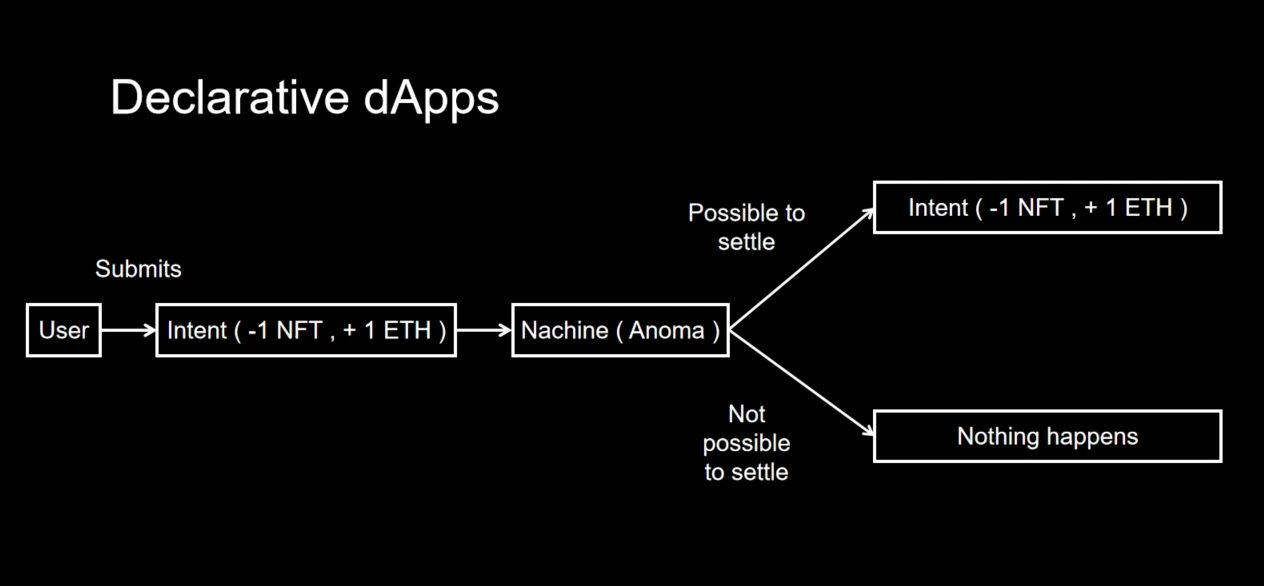
Image Source: Researcher@tmel0211
MEV
Maximal Extractable Value (MEV) refers to the additional revenue that miners can obtain by adding, deleting, or reordering transactions. This can be achieved through behaviors such as DEX arbitrage, front-running, back-running, liquidation, sniping bots, time-bandit attacks, sandwich attacks, and more. These activities harm the interests of users who use DeFi normally. In Ethereum, transactions are prioritized for miners based on gas, with high gas transactions being processed first and low gas transactions being processed slowly. Transactions are first submitted to the Mempool, where they wait to be included in a block. Validators extract transactions from the Mempool and add them to the next block during construction. Since the Mempool is public, searchers have the opportunity to pay validators to order transactions in a specific way, extracting value from users through ordering, thus creating MEV miner value. Implementing user intent requires transferring transactions to third-party outsourcing for processing, making MEV generated from transactions in the Intent-Centric architecture a key issue to focus on.
The most direct impact of MEV: while harming the entire network, competition also makes the market more efficient.
Unequal distribution of capital (larger holders having more ETH chips) may lead to centralization of validators (larger staking pools obtaining higher MEV income), reducing the overall security of the network. Even though there are currently some mitigating measures in place, the centralization risk brought about by the right to construct blocks cannot be completely eliminated.
To increase the likelihood of transactions being included in blocks, MEV searchers compete by bidding for gas priority. This can lead to network congestion in the public Mempool due to high gas fee transactions from searchers. However, DEX arbitrage and lending liquidation can also help the DeFi market reach equilibrium more quickly to maintain market stability.
MEV is an important and longstanding topic in the industry. Efforts to mitigate the adverse effects of MEV are continuously being explored. This will be further explained in the next section, "Universal Solutions for Implementing Intent." According to EigenPhi data as of September 15, 2023, the profitability level of on-chain MEV still has significant profit potential. After the Ethereum merge, the profit from Flashbots' block-producing nodes alone has exceeded 200,000 ETH, making it a very lucrative opportunity.
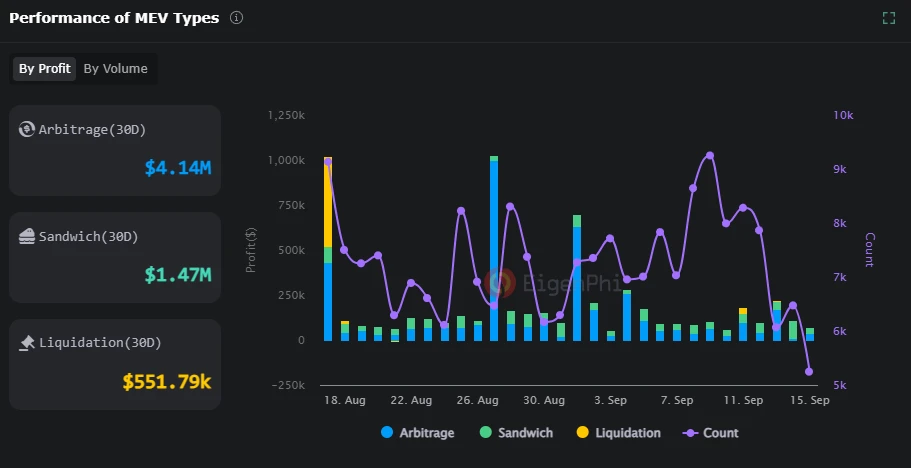
Image Source: EigenPhi | MEV Data
Cross-Chain, Sorters, and Oracles
Intent-Centric is a vast system architecture, and according to Paradigm's explanation, the content of Intent-Centric will involve the entire blockchain field, with large asset transfers between various Layer1 and different Layer2 needing to be conveniently processed by intent. The industry's development has brought us into a multi-chain era, where each chain is an isolated island, but there are different bridges between these islands. Therefore, cross-chain and sorters are essential bridges to meet the intent.
With the current prosperity of the Ethereum Layer2 ecosystem, the four major Layer2 solutions—Arbitrum, Optimism, zkSync, and Starkware—are each telling their own Layer3 story, corresponding to OPstack and ZKstack narratives. The common problem faced by Layer2 solutions is the issue of centralized sorters. While there are active efforts to find viable solutions, the reality is that there is a huge opportunity here. Taking OPstack as an example, its profit model can be simplified as "renting shops." Layer2 profit = Layer2 gas income + MEV income - Layer1 gas expenditure. To achieve the intent, the toll between Layer2 and Layer1 is essential.
Turning to cross-chain bridges, the prosperity of Layer2 has made us realize the considerable profits from sorters, but the profits from cross-chain bridges should not be underestimated. Cross-chain bridges are essential infrastructure for connecting different isolated chains. In the current bear market environment, in addition to meeting the cross-chain needs of normal trading users, there is still a market demand for cross-chain needs arising from airdrop expectations of speculators. The thriving DApps will gradually eat into the profits from convenient centralized exchanges. However, the security of cross-chain bridges is a noteworthy issue. According to official data from hacked.slowmist, in the two years from June 29, 2021, to September 16, 2023, there have been a total of 38 publicly reported security incidents in the cross-chain bridge ecosystem, resulting in a cumulative financial loss of up to $2 billion.
In summary, the inevitable gas fees involved in achieving intent are a significant consideration. However, this article does not delve into the security of sorters and cross-chain bridges, even though these are issues that deserve our attention.
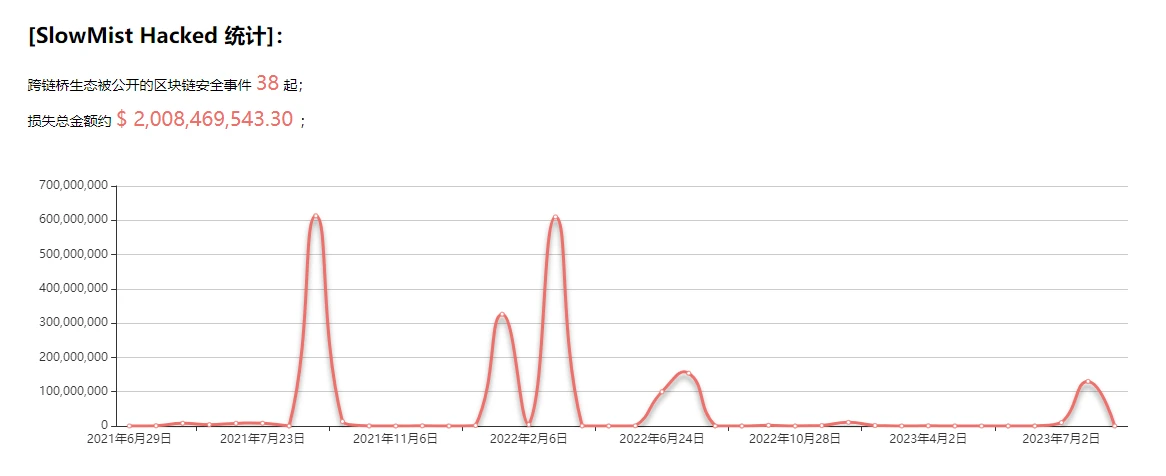
Image Source: hacked.slowmist
Turning to oracles, from a macro perspective, the strong financial nature of blockchain makes it a system environment that seeks determinism. Even though narratives about real-world assets (RWA) have been discussed for many years, the reality is that blockchain cannot obtain real-world data outside the chain and can only access on-chain data. This is because the virtual machine (VM) does not allow smart contracts to have network calls. Therefore, the operation of smart contracts must produce consistent results, making data from the outside world closed off to the blockchain.
Zooming in from a micro perspective, oracles are an important factor in the DeFi world. While the security of different protocol layers is usually inherited from the underlying smart contract network, the normal operation of these protocols still depends on oracles. If an oracle for a protocol is attacked or compromised, the entire protocol can be manipulated. DeFi now hopes to define itself as "primitives" and wants more teams to build products or composite protocols on their foundation. However, the new DeFi contracts derived from this iterative process will upgrade their operational logic to accommodate a larger ecosystem, which brings about some external dependencies and incurs unpredictable related risks.
After several years of development, the DeFi space has also suffered losses totaling billions of dollars. For example, in March of this year, the Euler Finance lending protocol was attacked by hackers, resulting in a loss of up to $200 million. The protocol allows users to collateralize and borrow, and the issue occurred in a specific function that was not properly secured, allowing users to disrupt the fundamental invariant of the lending market (such as the basic invariant in UniSwap: tokenBalanceX * tokenBalanceY == k). Similarly, derivative protocols that rely on oracles for pricing and lack internal price discovery mechanisms are susceptible to price lag and lack of updates, severely limiting their scale and user experience. This also explains how trader Avraham Eisenberg was able to successfully attack Mango Markets and withdraw $116 million from the cryptocurrency trading platform.
In conclusion, the dark rules of the blockchain forest are generally filled with unknown risks. There is still a long way to go to achieve the vision of the Intent-Centric architecture.
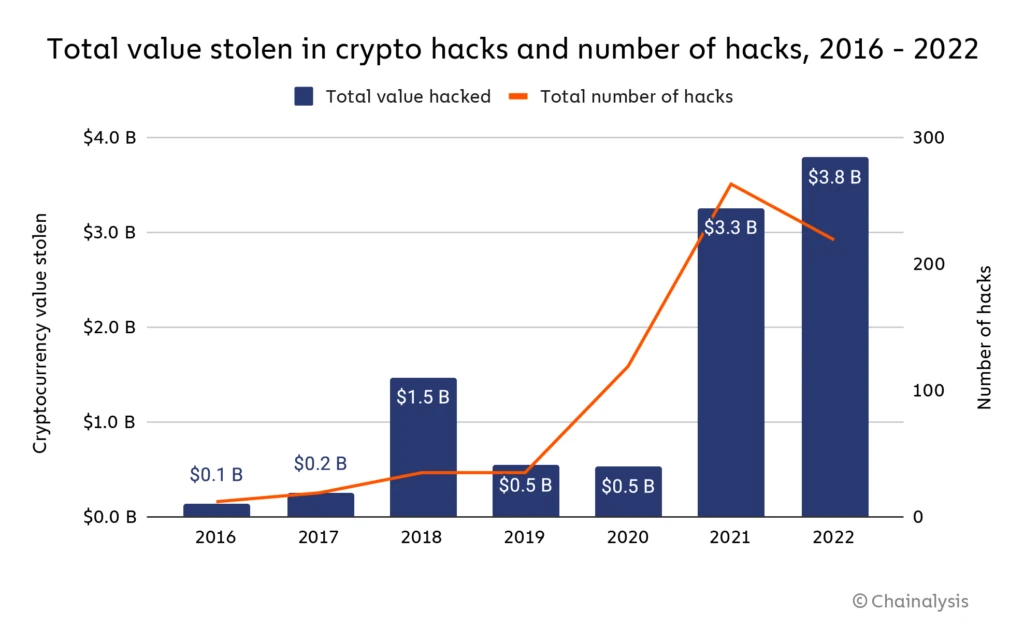
Image Source: Chainalysis
The appearance of aggregators is directly aimed at saving users the trouble of finding the best trading paths and profit strategies, including various types of aggregators such as trading aggregators, information aggregators, yield aggregators, liquidity aggregators, and asset management aggregators. The Intent-Centric architecture requires a certain degree of centralization, and various types of aggregators may provide a "reference answer" in the process of finding the execution path for intent, possibly through convenient parsers.
Gas is an indispensable toll for executing various transactions, and optimizing gas fees is also a long-standing topic in the industry. Currently, the overall optimization revolves around product end, account abstract wallets, and DeFi protocols. Whether aggregators, account abstraction, and DeFi protocols can be combined to optimize gas from a completely new product end perspective remains to be seen.
Wallet Authorization
The first step in Dapps interaction: wallet authorization. Let's shift our focus back to the transactions themselves. The purpose of the Intent-Centric architecture is to simplify transactions and reduce the user's threshold for use. However, each transaction within an intent involves numerous authorization signatures. How to securely and conveniently address the authorization issue is also a consideration. Perhaps account abstraction and the dappOS V2 mentioned later in the text are good solutions.
Universal Solutions for Implementing Intent
Anoma
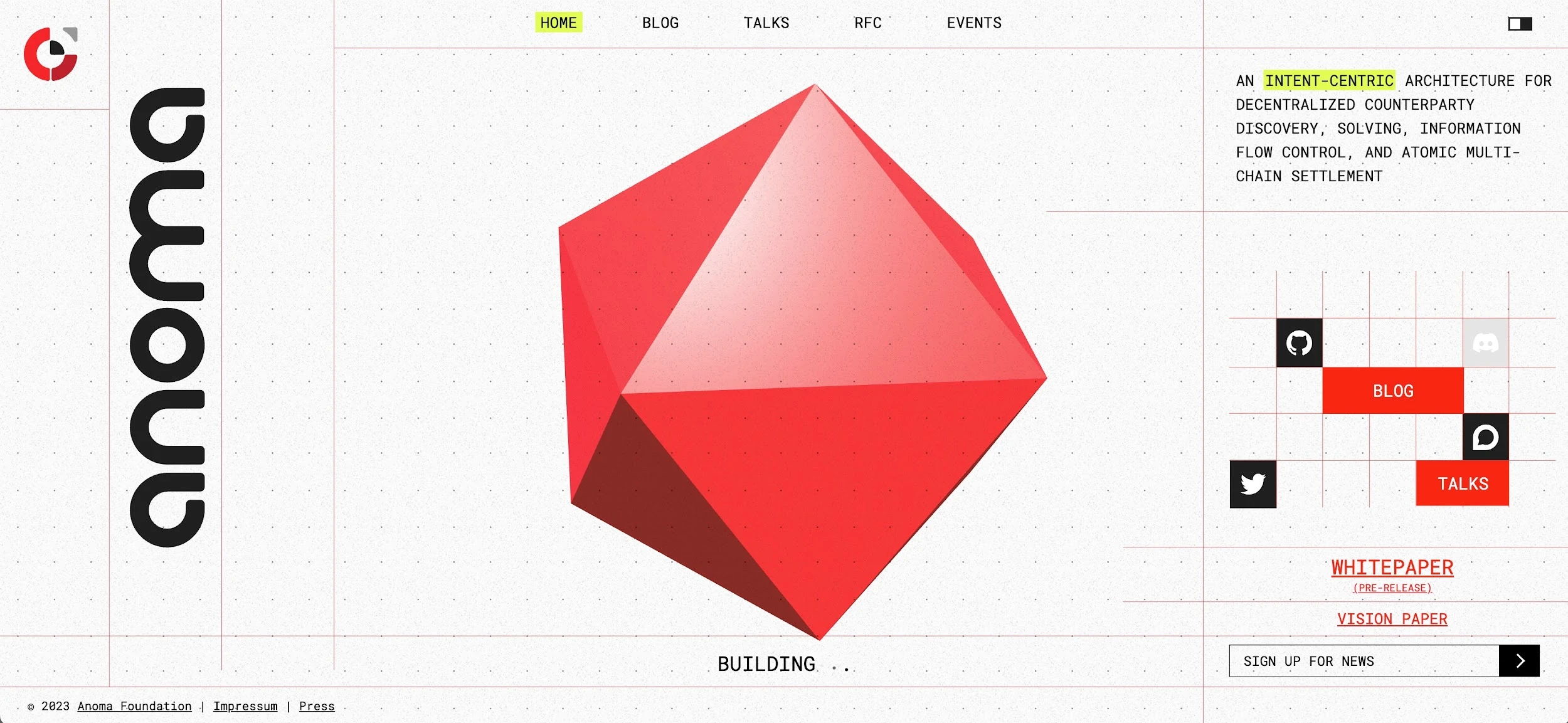
Image Source: Anoma Official
Introduction:
According to a report from Coindesk on May 31, 2023, the Anoma Foundation has successfully completed a total investment of $25 million from 14 capital sources, including CMCC Global and Electric Capital. The project proposed the architecture of intent in its whitepaper released in August 2022: the Intent Gossip Layer is used to propagate intent, discover transaction counterparts, and match execution paths. Its design is the default validation path, and all propagation (Gossip) information is signed by the originating node, forming a signature chain traceable to the initiator. This feature is particularly important in resisting censorship and DoS attacks, so when it comes to the implementation of Intent-Centric, Anoma is indispensable.
Anoma was initially developed based on Tendermint and used a Byzantine Fault Tolerance (BFT) consensus mechanism, then shifted to the "Typhon" PoS proof-of-stake consensus mechanism developed by Heliax to allow consensus partitioning between independent chains. The project team has developed various technologies such as Taiga (a private state transition framework integrated into the Intent Gossip Layer and matching layer), Typhon (cross-chain atomic transaction consensus mechanism), MASP (multi-asset shielded pool), Vamp-IR (arithmetic circuit language), and Juvix (smart contract programming language) to drive experiments in cryptography and distributed systems.
In the context of the "Programmability of Intent" mentioned earlier, to achieve the architectural vision of Intent-Centric, programmable algorithmic structures and the discovery of transaction counterparts are essential functions. They need to be built on the basis of multi-interactivity and multi-applications. This leads to the introduction of Anoma, a unified architecture for full-stack decentralized applications, to collectively build a model for decentralized applications.
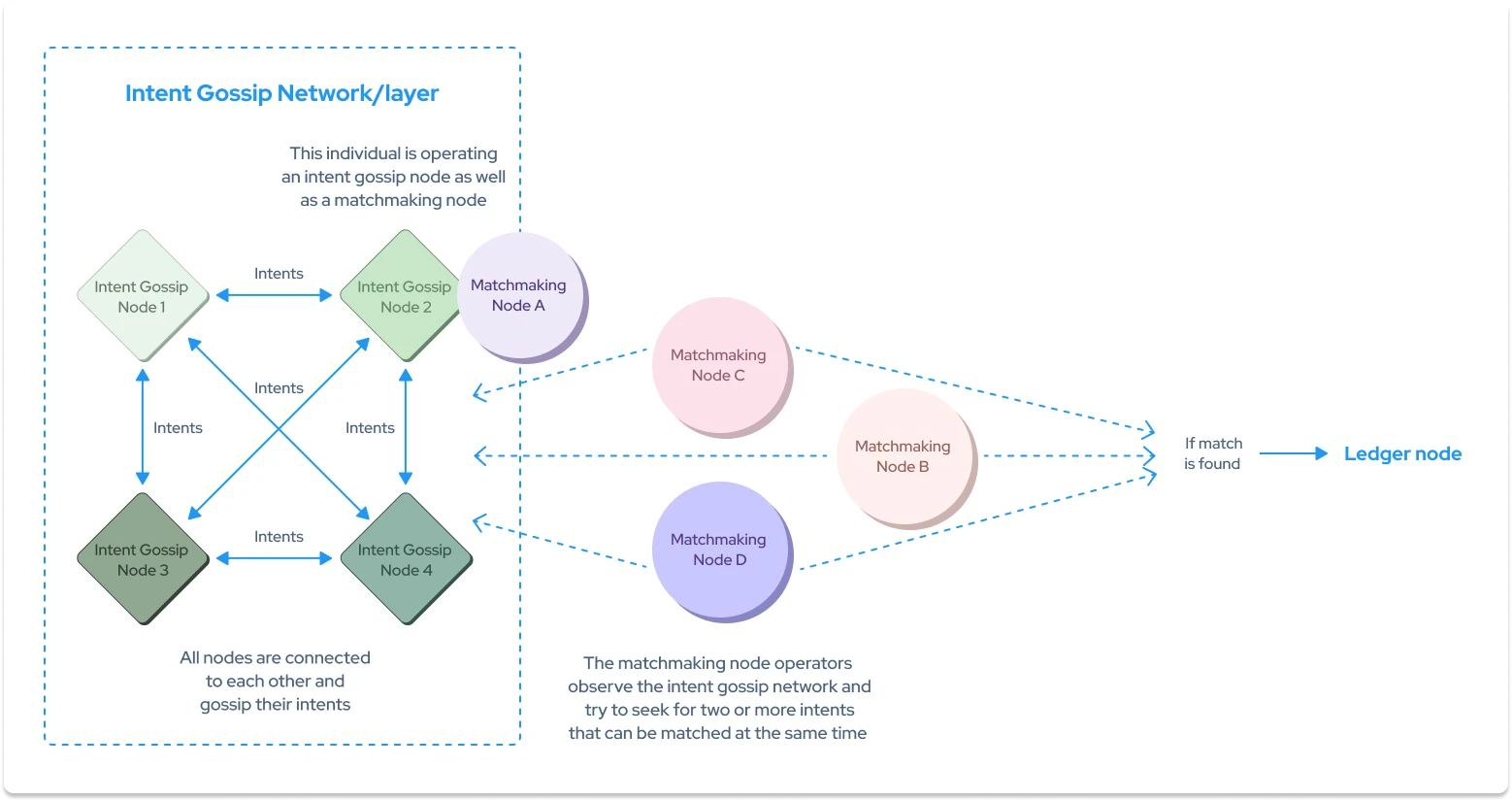
Image Source: Anoma
Design Architecture and Innovations:
- Privacy Payments
To protect user privacy and prevent others from tracing and collecting data, the sender, receiver, amount, and asset denomination are all encrypted. The use of zero-knowledge proofs (zk-SNARKs) ensures the transfer of funds. An innovative aspect is that it allows all assets to share the same shielded pool (MASP) to provide composable asset protection and increase user anonymity, rather than shielding each asset separately. The more participants and assets involved in transfers, the more frequent the transfers, significantly increasing the level of anonymity of asset transfer data.
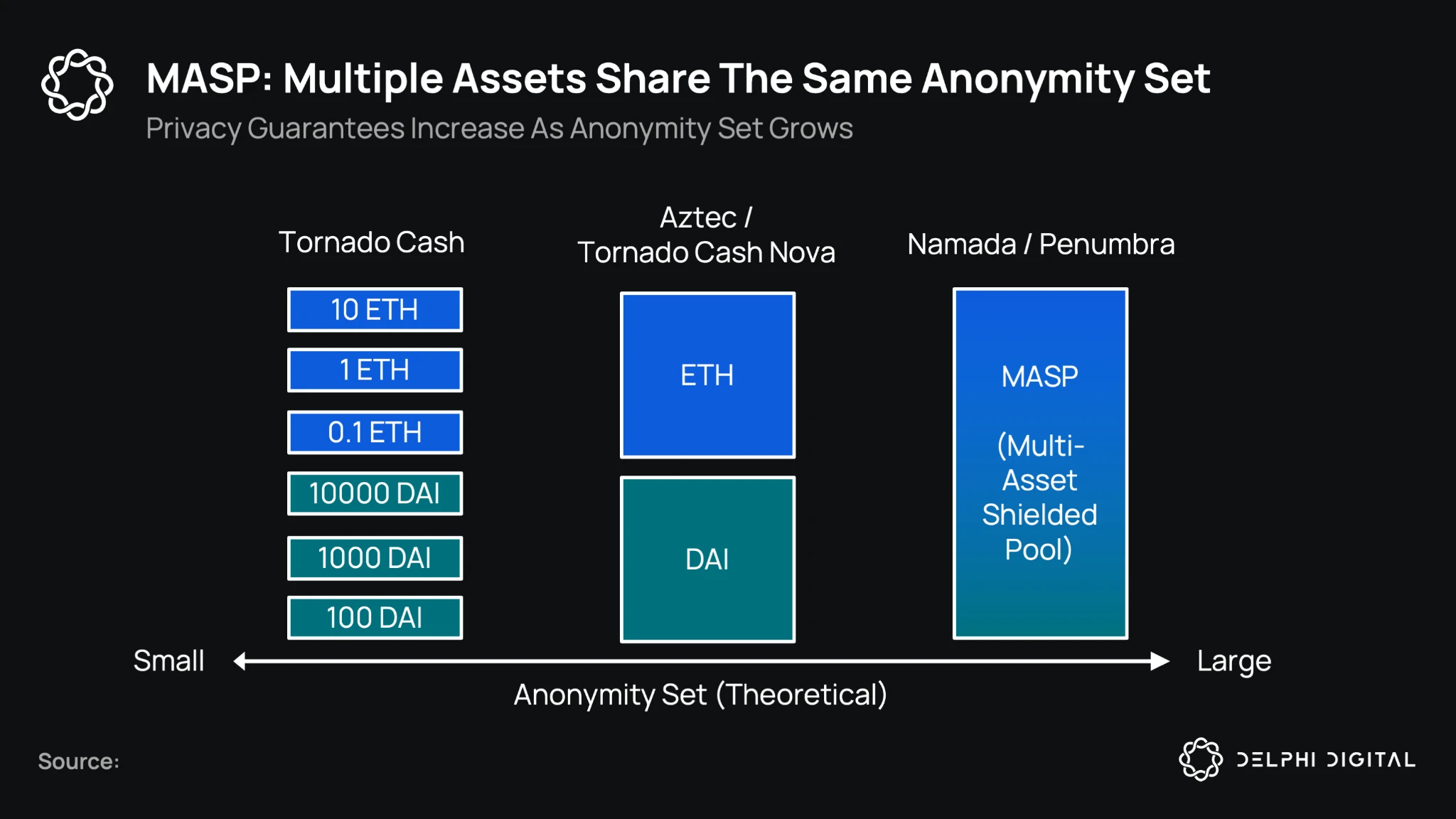
Image Source: Delphi Digital - Delphi Creative
- Barter Trading
The project emphasizes "barter" exchange plans, which are based on the ancient practice of bartering goods. In simple terms, it involves direct exchange without the need for a medium of exchange and without involving cash payments. Participants must have at least a double coincidence to successfully trade: one, both parties happen to have what the other wants, and two, the transfer of goods is convenient for both parties. This helps users transmit operations to nodes in the Intent Gossip Layer and matching nodes that check whether these intents are compatible, in order to create and match related transactions and send the corresponding execution transaction ledger. Anoma has implemented a digital barter plan to facilitate the exchange of goods, services, or digital representations of value.
- Intent Matching System
In the Ethereum EVM, transactions do not require future states but authorize specific execution paths. Anoma includes a matching system that allows users to broadcast transaction intents using Gossip. In simple terms, Anoma consists of two main parts: a distributed ledger and an intent matching system. They complement each other and can run independently. By using Intent Gossip running nodes, token exchange solvers, and RPC servers requesting new intents, transactions are submitted from matched intents to the distributed ledger, helping users automatically discover transaction counterparts.
- Multi-Chain Support
Anoma uses the Inter-Blockchain Communication (IBC) protocol of the Cosmos ecosystem for blockchain communication, which uses relayers to achieve data transfer between different blockchains. It aims to become a multi-chain privacy layer. Although relayers are typically operated by node operators, anyone with the capability can run them and earn fees in the process.
- Fractal Scaling Solution
Anoma uses a fractal solution to address the scalability issue of blockchain, allowing users to create local instances to meet other transaction needs. Fractal refers to dividing Anoma into different application chains to handle different tasks, allowing each Anoma application chain to be highly customized to achieve scalability and accommodate user growth (similar to supporting the IBC protocol to achieve scalability). Its security will be enhanced in the future by the IV Interchain Security, IV Mesh Security, and IV Interchain Alliance projects.
SUAVE
Introduction:
According to news on July 25, 2023, the Ethereum infrastructure service Flashbots completed a $60 million Series B financing at a valuation of $1 billion to develop the SUAVE platform. SUAVE (Single Unified Auction for Value Expression) separates the mempool and block generation from the existing blockchain to form an independent blockchain network (sorting layer) and provides highly specialized plug-and-play alternatives, aiming to address the infrastructure-related challenges of MEV.
Although SUAVE is a new blockchain, it is not a general-purpose smart contract platform that can compete with Ethereum or any other participating chains. If Anoma can be compared to building a blockchain centered on intent, then SUAVE is building intent-centered infrastructure.
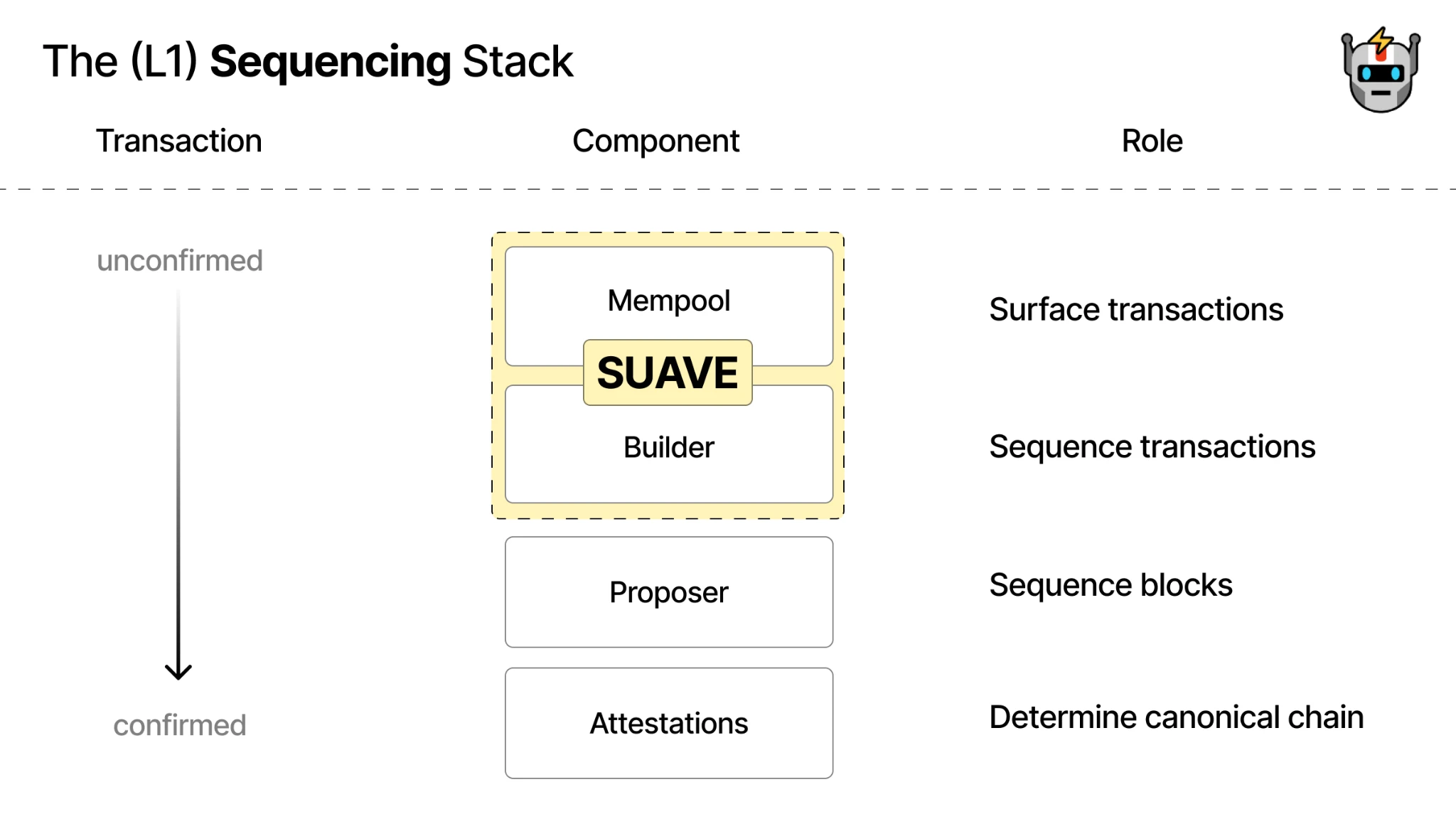
Image Source: SUAVE in the blockchain stack
Three Goals of SUAVE:
Illuminate the Dark Forest: Expose unfair events in the opaque MEV ecosystem to every user, quantify their impact, and break down information barriers among participants;
Democratic Mining: Integrate miners and retrievers in an open manner to promote competition among all parties to the maximum extent and open to all miners for free, to prevent MEV integration and centralization;
Profit Distribution: Give MEV to the people who create it—Ethereum users.
According to SUAVE's intent solution, when processing transactions from external (e.g., Ethereum), cross-chain settlement is required. It can be used to attempt to address various risks in the EVM, similar to the significant success achieved by MEV decentralized solutions such as MEV-Geth and MEV-Boost. However, it should be noted that users will deposit funds into SUAVE during the intent execution process, and the smart contracts on SUAVE will need to verify assets and may involve oracles in the process of unlocking funds to meet the demand. Therefore, to some extent, SUAVE will also face all the risks of cross-chain bridges today.
From SCW and AA to SUAVE and Intent-centric:
Reviewing the "Account Abstraction AA" section mentioned earlier, let's reconsider the main functions brought by account abstraction: key recovery, gasless payments, multi-sign authorization, multiple transfers in a single transaction, fee limits, etc. In general, account abstraction perfectly combines the advantages of regular accounts (EOA) and smart contract accounts (CA).
The vision of SUAVE is to become a common sorting layer between different chains (including cross-chain transactions and MEV). Therefore, if a user's intent involves cross-chain asset transfers, the advantages of account abstraction (AA) and multi-sign smart contract accounts like Gonsis Safe (SCW) can be combined, along with SUAVE's EVM solution, which may currently be a theoretically superior solution.
CoWSwap

Image Source: CoW Protocol
Introduction:
If there is a project that comes closest to the Intent-Centric architecture, CoWSwap is definitely on the list. Unlike other protocols, the CoWSwap protocol only requires users to send a signed order, delegating the execution of the transaction to the resolver network, and completing the transaction within that network (without specifying an execution path). Meanwhile, off-chain signed orders are executed after being matched by the resolver (similar but different from the Bob Solver mentioned earlier). Due to the resolver's "batch bundling" power, the gas fees during the process will be borne by the resolver, and there is no need to pay if the transaction fails.
CoWSwap Hooks:
When talking about Hooks, does it remind us of Uniswap V4? However, the actual usage functions of the two are completely different. CoW Hooks link transactions, bridging, staking, and deposits together, and can execute transaction sequencing in a single transaction.
Main Functions:
Pre-hooks can be used to "set" conditions for orders. For example, code required for on-chain signature verification or setting approvals through EIP-2612 permits;
Post-hooks are executed after the exchange occurs and the receiving address receives the funds. Post-hooks provide the opportunity to immediately use the funds, including providing collateral, providing liquidity, or bridging tokens to L2.
DeFi Examples of CoW Hooks:
Debt repayment and staking: Set pre-hook operations to repay debts and close positions, then use CoW Swap to exchange assets, and finally use post-hook operations to deposit new assets into the collateral pool;
Creating LP positions: Use either pre-hook transactions or post-hook transactions only;
JIT (just-in-time) smart orders: Use the composable CoW framework (ERC-1271) to program Safe smart contract wallets to execute custom smart contract approvals and exchanges;
NFT: NFTs can be bought or sold in the CoW Hooks feature;
Cross-chain: Assets can be sent to a bridging contract through CoW Hooks to complete cross-chain transactions;
Airdrops: Airdrops can be sold using CoW Hooks without using ETH as gas;
Unlocking and re-staking: If staking 32 Ethereum as a validator, it can be unstaked to claim rewards, or assets can be restaked on another chain through CoW Hooks;
Automatic increase in LP positions: Assuming becoming a liquidity provider in the EUR - USDC pool on the Gnosis chain to earn GNO Token rewards. CoW Hooks can automatically convert your GNO to EUR - USDC in a 50/50 ratio through CoW Swap to automatically increase the LP position.
dappOS V2
After discussing the intent layer and related infrastructure layer, let's explore the dappOS V2 protocol, which is hailed as the "new wave of intent layer." On July 21, 2023, dappOS V2, valued at up to $50 million, completed a seed round of financing led by IDG Capital and Sequoia Capital (China), and also attracted attention from other major VC firms and Binance.
dappOS V2 is an intent protocol, with dappOS accounts and dappOS networks designed to simplify user interaction with dApps to achieve a user experience at the level of CeFi. At the same time, it eliminates the fragmentation barriers brought by multiple chains through "Chain Abstraction" technology (similar to and different from Account Abstraction).

Image Source: Intent-Centric A Narrative worth keeping an eye
Whether the purpose is intent-driven or transaction-driven, the user's focus is always on the total amount of funds in the account, rather than the balance of individual assets between different chains. According to dappOS V2's understanding, there should be a unified account wallet to achieve the vision of "one signature completes everything," and it introduces the design concept of one-click multiple "TXN (transaction)" to remove obstacles for users before completing TXNs, achieving the user's intent-driven transaction purpose.
For example, using it to interact with GMX between Arbitrum and Avalanche on different chains without holding assets, to achieve the future DeFi's fundamental transaction rule driven by intent. Therefore, implementing the concept of intent-driven requires involvement of chain abstraction, account abstraction, and more "protocol abstraction." However, at this point, it is worth considering whether the interaction rules for users and the airdrop rules for various projects will change if all kinds of abstractions are implemented?
Conclusion:
Intent is still full of risks and challenges in its execution, as it depends on intermediaries or specific executors, leading to the risk of centralization and monopolization, thereby affecting the trust issue of the entire middleware. Secondly, the security and privacy risks associated with handing over transactions to third-party executors are also worth considering. It is highly anticipated whether developers of intent applications can achieve a balance in security, privacy, and convenience.
The concept of intent has been maturely applied in the Web2 domain, such as in ride-hailing apps, ticketing apps, and map navigation. However, the success of these applications is built on the sound infrastructure of Web2. To see mature application scenarios in the Web3 domain, we still need to wait for the continuous maturity of the industry. Intent-Centric is a grand concept that will involve all aspects of blockchain and is also one of the best paths for combining blockchain with AI. However, whether it can be implemented and flourish still requires our continuous attention.
References and Related Articles
【1】https://www.paradigm.xyz/2023/06/intents
【3】https://www.alchemy.com/overviews/what-is-a-mempool
【4】https://writings.flashbots.net/the-future-of-mev-is-suave/#iv-suave-in-the-blockchain-stack
【6】https://news.marsbit.co/20230818082351362551.html
【8】https://research.web3caff.com/zh/archives/11091?login=success&ref=416
免责声明:本文章仅代表作者个人观点,不代表本平台的立场和观点。本文章仅供信息分享,不构成对任何人的任何投资建议。用户与作者之间的任何争议,与本平台无关。如网页中刊载的文章或图片涉及侵权,请提供相关的权利证明和身份证明发送邮件到support@aicoin.com,本平台相关工作人员将会进行核查。




